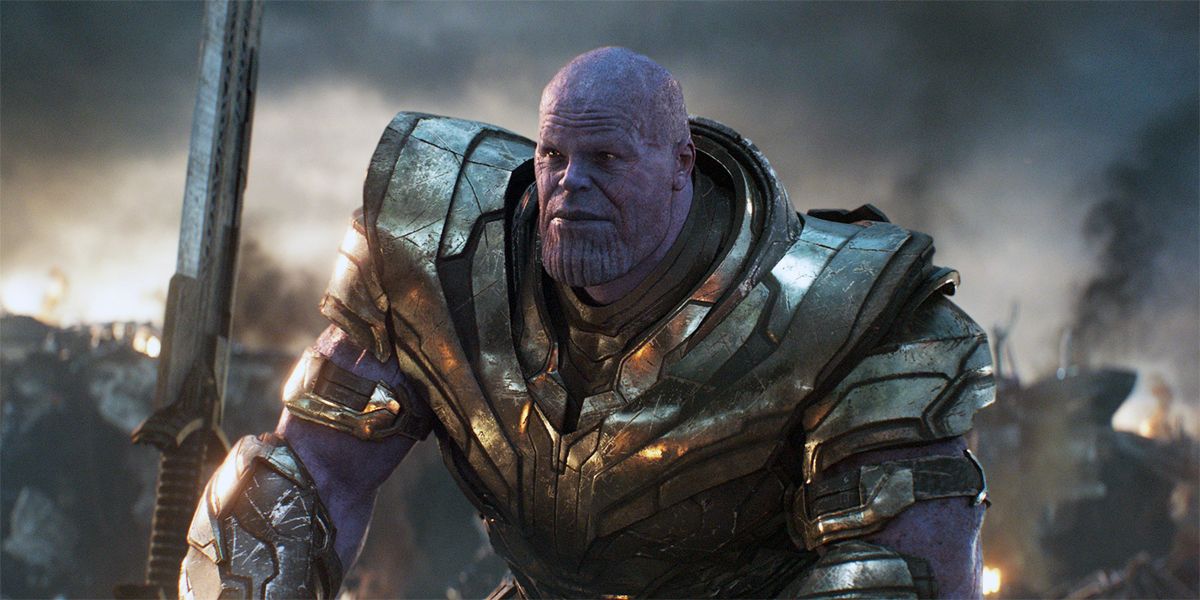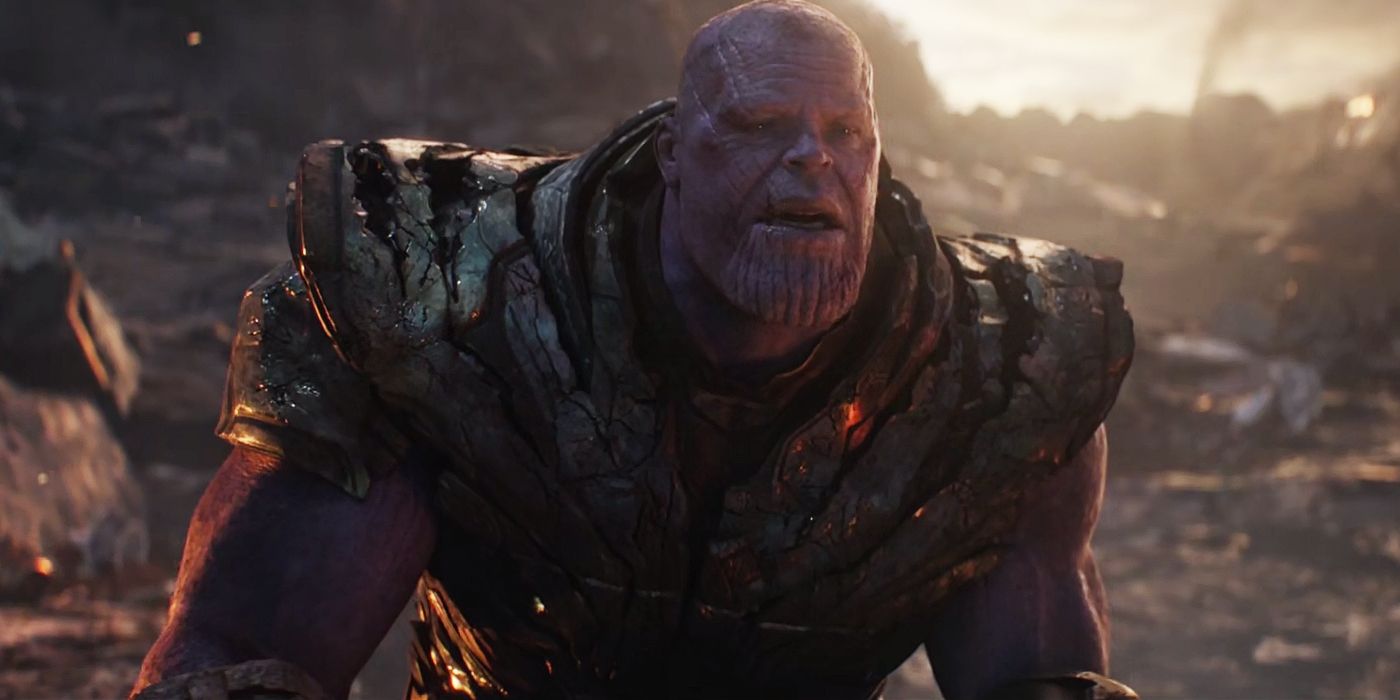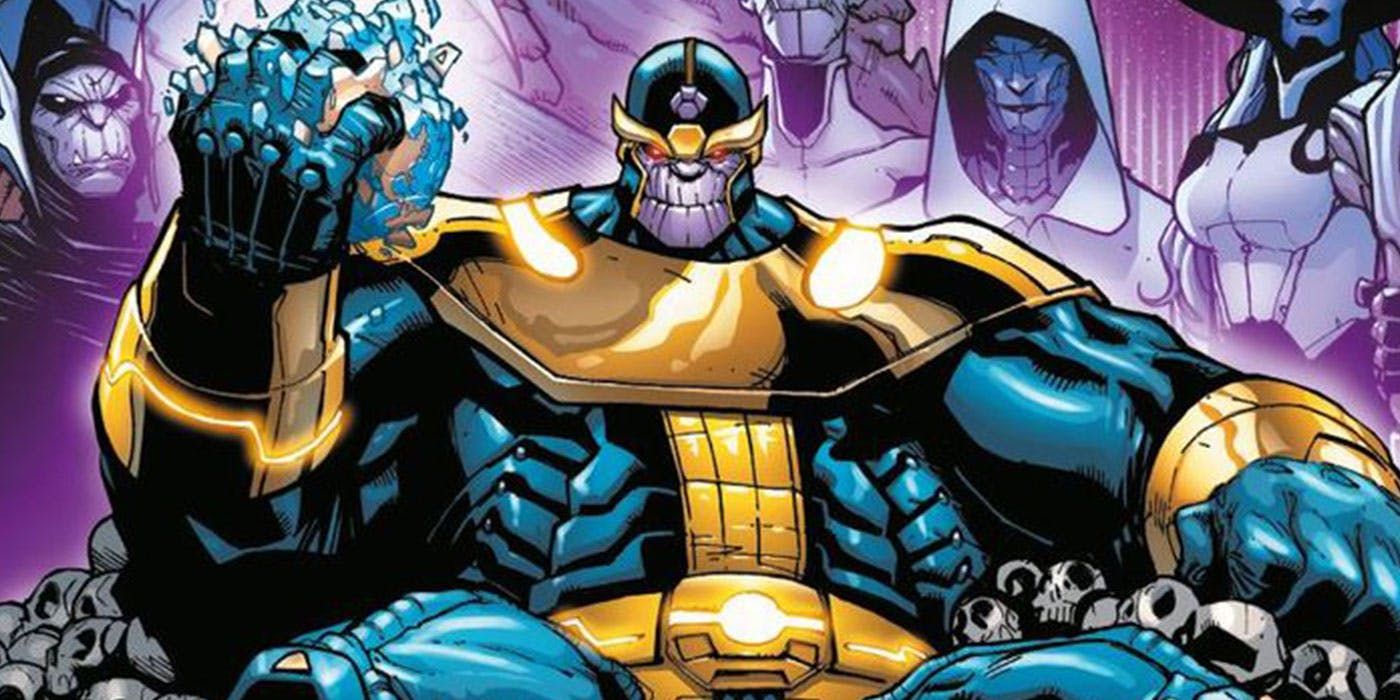It felt like a natural conclusion to have Avengers: Endgame kill off the big bad of the MCU once and for all. With Thanos looming over the overarching plot of the MCU films since his first post-credits appearance in The Avengers, his end was almost as inevitable as he claimed himself to be.
But if there's one thing that comics understand it's the only thing as inevitable as death is resurrection, and if the MCU's Thanos is anything like himself in the source material, it's possible we haven't seen the last of the Mad Titan.
Surprisingly little is known about the MCU's Thanos despite him being such a huge part of the story. The audience knows some of his background, in that he tried to warn of the oncoming threat of overpopulation that would decimate his home planet of Titan, and they heard of his dreams to retire quietly one day after saving the universe. Tied between both is his philosophy of perfect balance, hardening his heart to the loss of billions of lives if trillions could be saved.
Of course, fans also know that he was formidable not only in his physique but in his intellect. The same body that was capable of going toe-to-toe with the Hulk held a mind that rivaled the scientific genius of Marvel's greatest intellects, and Thanos was no stranger to employing the fruits of his labor toward his advantage. He commanded vast intergalactic armies, wielded a range of technologies and even disassembled his own adopted daughters in order to reassemble them with bionic components that made them stronger. In fact, if the source material is anything to go by, he may have even gone a step further with himself.
While still an immense threat in the comics, the Thanos of the 616 Marvel Universe has a far longer and more storied history than his movie counterpart. Perhaps as a consequence of that, Thanos' appearances became a lot more common once he caught on as a villain, and Marvel's editorial staff and creators needed to both justify how he could appear so much while also providing fuel for yet further appearances in the future. The answer they came up with was an obvious one: clones.
Creator Jim Starlin first pioneered the idea when Thanos' subsequent appearances after his change-of-heart in Infinity War did not seem to jibe with his characterization in comics like The Avengers or Iron Man. In order to explain the inconsistency, Starlin first introduced the idea that Thanos had several various clones of himself. Over time, some of these clones became known as the Thanosi and were either inferior counterparts that did not carry all the power and cunning of the original.
This created a sort of having your cake and eating it too situation for Marvel, whereby they could introduce Thanos as a major threat, but still retain the threat he posed after innumerable times getting defeated. After all, the last Thanos that was defeated wasn't the real Thanos -- it was just some cheap knockoff version. From an outsider's perspective, though, this may just seem like a cheap trick more befitting lazy soap operas than top-notch summer blockbusters, but in actuality, the idea of Thanos creating clones for himself holds a lot of potential.
One great example is Terraxia, a female clone of himself Thanos made whom he instilled purposefully with weaknesses so that he could retain power over her. Terraxia helped see Thanos through to one of his greatest successes, and she personally murdered Iron Man and Spider-Man. But when Nebula seized the Infinity Gauntlet for herself and undid Thanos and Terraxia's scheme before casting the pair into the abyss of space, Thanos was forced to watch as his greatest creation suffocated before his eyes due to the weakness he himself created.
The trick is to always keep the gravitas of such possibilities right at the forefront of the stories being told, and with it truly great Thanos clone stories can become some of his best. From a storytelling perspective, it makes more than enough sense that Thanos would utilize such methods. One of the major questions for how his snap worked was whether or not it was truly random in the half of all life it chose to obliterate. Until now, fans believed Thanos exempted himself from the half that was dusted, but by utilizing an army of clones Thanos could shore up his chances and guarantee there was a version of himself to pick up the gauntlet.
It also makes sense for the peaceful retirement Thanos wanted to enjoy, and his designs for the universe thereafter. The next big regarding Thanos' plan was how he planned on cultivating the universe further once it grew overpopulated in the future, and with clones to carry on his legacy, it would never be an issue.
Directed by Joe and Anthony Russo, Avengers: Endgame stars Robert Downey Jr. as Iron Man, Chris Evans as Captain America, Mark Ruffalo as Bruce Banner, Chris Hemsworth as Thor, Scarlett Johansson as Black Widow, Jeremy Renner as Hawkeye, Brie Larson as Captain Marvel, Paul Rudd as Ant-Man, Don Cheadle as War Machine, Karen Gillan as Nebula, Danai Gurira as Okoye and Bradley Cooper as Rocket, with Gwyneth Paltrow Pepper Potts, Jon Favreau as Happy Hogan, Benedict Wong as Wong, Tessa Thompson as Valkyrie and Josh Brolin as Thanos. The film is available on Digital HD, Blu-ray and 4K UHD.



